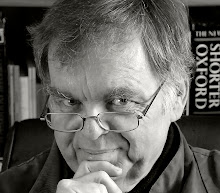Within 6 months of my buying the Canon S30, affordable digital SLRs began to emerge. I went out and bought a Nikon D100 mainly because my latest film camera was a Nikon F80 (that's N80 to you Americans), I had enjoyed good experiences with it and I already owned a few Nikkor lenses.
In those early days (2003), so called "affordable" DSLR bodies like the D100 still cost over $4000 Australian but I felt that the investment was worth it. Before the end of that year I had bought a second D100 as the amount of straight photography I was then doing had increased a lot and I needed a back-up.
The D100 has since suffered a lot of nit pick criticism for all the things that it wasn't. It must be remembered, however, that for a short while in the Australian market, it virtually stood alone as the viable tool for small-scale photographers wanting to take advantage of the wonderful business efficiencies that digital could provide. Many gripes were made in the light of later models by johnny-come-latelies looking at old spec sheets. The D100 was not replaced until the D200 came along a whole three years later. It becomes very much easier to produce better cameras when you have a long working career like the D100 to learn from and later technical innovation to take advantage of.
Neither of my D100s ever let me down, most operations were virtually instant, picture quality was everything I could have asked for and despite their hand-me-down F80 construction, they continued to labour on without complaint despite the hard life I put them through. I have since sold my D100s to amateur photographers who (at last report) remained very pleased with them.
One thing that so many people choose to forget is how much more technically advanced the first DSLRs were, compared to even the very best film SLRs. In reality, film SLRs in 2003 were still only highly refined versions of innovative 1960's models. DSLRs were a world apart, providing capabilities we could only have dreamed about previously. While it was possible to whine about the ultimate resolution shortcomings of 6 megapixel digital images compared with film, the fact was that the quality of what I was producing did indeed soar, my running costs did indeed plummet and the speed at which I could get completed work into layouts and over to clients had left film spinning in the dust.
If cameras like the Canon S30 had served notice that film's days as the resident imaging technology were numbered, cameras like the Nikon D100 arrived with the sherrif brandishing an eviction order.
See my work at: www.pbase.com/davidhobbs


No comments:
Post a Comment